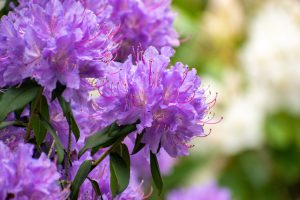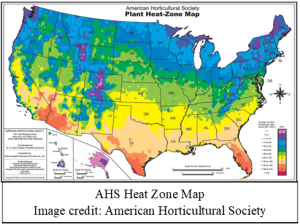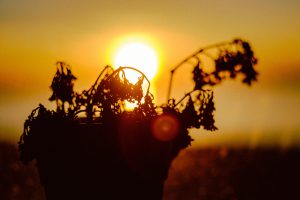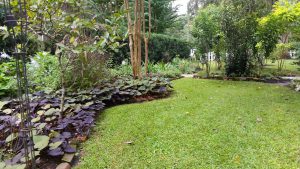Placing the right plant in the right place is crucial for gardening success, especially in the challenging climate we have here. Most of us are familiar with plant hardiness zones but have you heard of heat zones?

The lush and elegant garden of @Magdas_garden is one of my favorite plant related accounts to follow on Instagram. The ambiance she has created in her garden with perfectly placed architectural and sculptural elements, lush plants, and thoughtful lighting is unrivaled. Every inch of her property is filled with beauty and every view is pure magic. Magda lives in the Western part of Canada near Vancouver. It is in the Canadian equivalent of USDA Hardiness Zone 8b/9a which happens to be the same as Duval County. Yes, you read that right—Canada–the same growing zone as Florida! That must be some mistake, right? I never thought of Canada as being remotely tropical like Jacksonville. Well, I did a little research, and sure enough it’s a very temperate location due to its proximity to the sea and warm ocean currents.
The more posts I looked at, the more I started to notice some of the plants Magda has growing alongside common NE Florida plants such as palms, oleander and bougainvillea are notoriously difficult or impossible to grow here: hosta, coral bells, ranunculus and rhododendron to name a few. How could that be if we are in the same growing zone, I wondered. So, I started digging a little deeper and discovered a SECOND zone system for gardening–the Heat Zone!  While the USDA Plant Hardiness Zone map considers the average low temperatures of a region it does not factor in the average high temperatures.
While the USDA Plant Hardiness Zone map considers the average low temperatures of a region it does not factor in the average high temperatures.
Heat zones are the high-temperature equivalent of cold hardiness zones.

In 1997 The American Horticultural Society (AHS) developed a Plant Heat Zone Map that also divides the country into twelve numbered zones. Find it here: https://ahsgardening.org/. The map’s twelve zones are based on the average number of “heat days” per year – days that temperatures rise above 86 F. “That is the point at which plants begin suffering physiological damage from heat,” AHS explains. The area with the least heat days is zone 1, while that with the most heat days is zone 12. Coastal Duval County is zone 8 and inland is zone 9.
Assuming plants are receiving adequate water, heat damage is slow and subtle. Plants die quickly when they freeze, but plants suffering from heat stress can linger on for years, showing a myriad of symptoms from bud drop to chlorosis and eventual death. The ability of a plant to survive can be affected not only by watering, but also by light exposure, air circulation, and proximity to nearby structures, among other factors. For example, placing a “full sun” plant in a morning sun only location might be appropriate if you are in the plant’s hottest recommended heat zone.
Right plant, right place

is one of the cornerstone principles of Florida Friendly Landscaping. So, the next time you’re out plant shopping, consider the heat tolerance as well as the cold tolerance of the plant you’re purchasing. Remember that full sun here might be a lot hotter than full sun in other parts of the country! Unfortunately, most nursery plant labels are not location specific, nor do they indicate the AHS Heat Zone, but that is slowly changing. Thousands of garden plants have been coded for heat tolerance, and more are being coded. The Florida Friendly Landscaping Plant Guide found here: https://ffl.ifas.ufl.edu/resources/apps/plant-guide/ is a wonderful resource for taking the guesswork out of finding plants that will thrive in this climate.
 2
2
